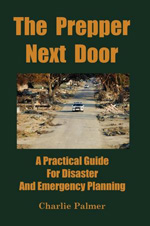If you pay attention to world events, the trouble in Ukraine is a major concern. Ukrainians, fed up with government corruption, protested when their president failed to live up to his promise to allow more economic freedom. Overwhelmingly, Ukrainians want more trade with the West and less bullying by Russia. They want an end to corruption.
The president felt economic opportunities were more than adequate, at least for him: In his few years as president, he built homes worth $75 million dollars on his salary of about $25,000. He sat on a golden toilet, literally. Corruption and greed dominated his presidency.
When the kettle boiled over, the president couldn’t get the protesters to shut up. They just kept protesting. Darn citizens. Going to plan B, the president armed selected of his police with rifles and started shooting protesters.
* Here’s a good lesson for would-be dictators and corruptacrats to remember: It’s the Internet age and young people just don’t give a &*!*. If you start knocking off protesters with snipers, for each one you get, you’ll turn 10,000 against you. When your security forces are outnumbered 100 to 1, they’ll cut and run. You’ll need to pack up your golden commode and flee.
I wrote in the book about how the Internet is changing the nature of revolutions by allowing the quick mass assembly of protesters. We saw this in the Middle East. It’s not good political PR for a president when a government sniper shoots a protester through the neck and the cell phone video goes viral.
Make no mistake, this crap worked in the 1900s. Shooting a few protesters dead could stop a riot or protest. Today, not so much. It just fans the flames of dissent.
Even as the Internet revolutionizes revolutions, good old-fashioned prepping values matter. There are bank runs in the Ukraine, as people seek to stock up on food given the huge uncertainty in their future.
Lesson 1: Lay in your stock of essential supplies before trouble happens.
Because of the behavior of some of the police, many police have fled and citizens patrol much of the capital.
Lesson 2: If society collapses, don’t count on the police or military to stick around protecting you. You’ll need to protect yourself and your family.
Russia has tried to keep an iron grip over the Ukraine. When the pro-Russian Ukrainian president fled, Russia announced military exercises at the border.
We’re hearing Russia might need to intervene to “protect” ethnic Russians inside Ukraine. BS. Make no mistake, this is historical propaganda: You always tell the population they’re in danger and that intervention is necessary to save lives. That’s how you launch foreign wars. It’s how World War II started.
Lesson 3: Wars will always be started under false pretences by political scum. Never trust anyone in elected or appointed office! I don’t care if they’re capitalist, communist, Republican, Democrat, or Bolshevik, there’s something about positions of power that attract the worst dregs of human society. Once in power, these political scum have the ability to harm countless people through their actions.
If Russia does intervene in Ukraine, all bets are off as to the future. Ukraine isn’t like many of the politically isolated areas where conflicts drag on for decades. It’s between Eastern and Western Europe. In some ways it’s more instrumental than other troubled countries in the region, because Russian oil and natural gas flows through Ukraine to Europe.
The $10,000 question: If Europe winds up without oil will it intervene? If America and Europe are asked to help the cause of freedom, will we get involved in Russia’s “backyard”?
Lesson 4: We live in a connected world where events far off can have far reaching effects. We never know what could start WWIII.
If it can help it, Russia will not allow a truly free Ukraine, anymore than Russians have real freedom today under Putin. There is one thing Americans should know: Much of what you’ll hear on the Internet about this conflict will be Russian propaganda posted by paid propagandists. If Stalin lived today, he’d be on Facebook. He’d have lots of Facebook friends.
Lesson 5: Never blindly trust anything you see on the Internet. There are powerful forces at work trying to corrupt the minds of the gullible. Those gullible become a problem when they push the rest of the world toward destruction. Even if you’re not gullible, you’ll be affected by their collective action.
There is dangerous nationalism in Russia today that echoes too much of history’s big conflicts. Misdirected nationalism and aggression lead to a country’s downfall. That’s exactly what happened in Germany under Hitler.
Lesson 6: As a society, we’re technologically at the height of human achievement to date. That doesn’t prevent emotional stupidity, prejudice, greed, and a whole host of human emotions from destroying society. Don’t assume because society is so technologically advanced that people are smart enough to avoid WWIII. They aren’t.
***
Interesting Fact: The Cyrillic alphabet used for both Russian and Ukrainian was introduced into Russia by Christian missionaries. The Ukrainian alphabet included a letter “gey” with a little curl which doesn’t appear in Russian.
In 1933, the Soviets banned the single letter gey from the Ukraine. They saw the letters’ use as a sign of rebellion and a lack of conformation to Russia.
